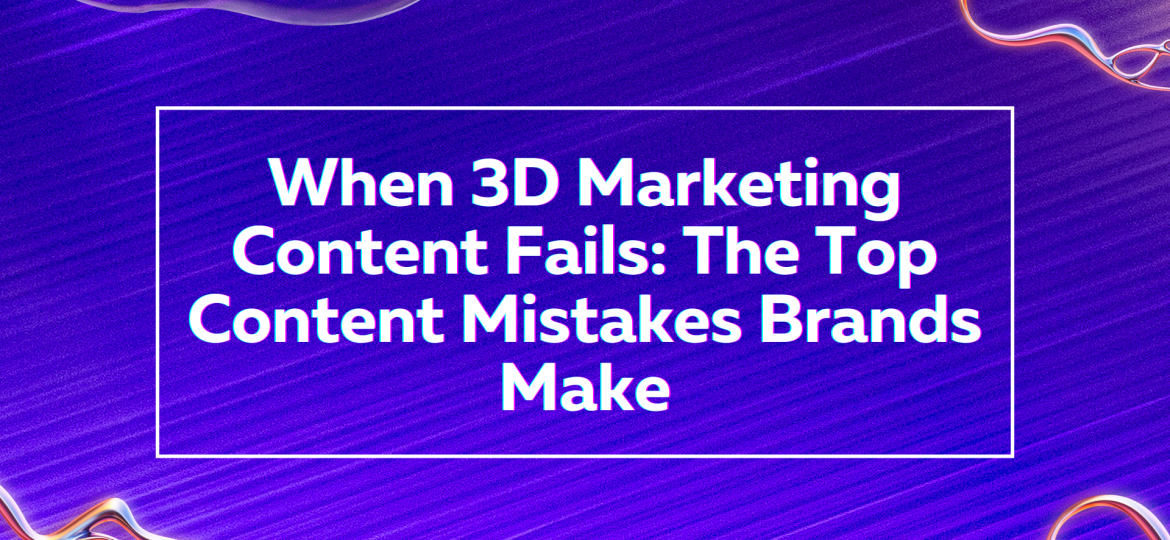
You invested in a 3D holographic display. It’s eye-catching. It turns heads. But here’s the problem:
People stop, stare… and keep walking.
This isn’t a hardware issue, it’s a CONTENT FAILURE! And it’s one of the most expensive mistakes brands make with 3D marketing.
Let’s break down the top content mistakes killing your ROI and how to fix each one.
1. Using Flat Ideas on a 3D Canvas
You’re using 3D tech but with 2D thinking. If your content looks like a traditional digital ad, like basic logos, plain text, and product shots, you’re missing the power of depth, motion, and spatial storytelling.
Fix it: Build for three dimensions. Think rotating products, layered motion, animated textures, or “floating” effects that feel impossible on a flat screen.
2. Forgetting to Lead With the Hook
3D displays give you 3 seconds to grab attention. Yet many brands waste that window with:
- Slow intros
- Brand name reveals
- Unclear visuals
If your animation takes too long to get interesting, you’ve already lost the viewer.
Fix it: Start bold. Lead with the most visually arresting element first, an exploding logo, spinning sneaker, or steaming latte. Then pull them into your message.
3. Ignoring Context and Environment
3D content doesn’t exist in a vacuum. Yet many brands design content without asking:
- What’s behind the display (glass, wall, window)?
- What time of day is it most visible?
- What direction is foot traffic coming from?
If your visuals blend into the background or are visible only from one awkward angle, you’ve wasted the opportunity.
Fix it: Optimize brightness, contrast, and angles for your space, not just your animation software.
4. Overloading the Viewer
More motion isn’t always better. Some 3D content looks chaotic—spinning logos, flashing text, flying objects—creating confusion, not curiosity.
Too much visual noise equals one thing: disengagement.
Fix it: Simplify. Choose one core message per animation cycle. Use movement intentionally to guide the eye, not overwhelm it.
5. No Clear Brand Tie-In
Yes, the floating coffee cup is cool. But what does it lead to? Many brands stop at “eye-catching” without tying content back to:
- The product
- The offer
- The action they want someone to take
Fix it: Every animation should answer: Why should someone step inside? Use floating text like “Try it inside,” “Limited drop today,” or “Fresh roasted daily.”
6. Stale Content Loops
Your display can loop forever, but your customer doesn’t. If they walk by every day and see the same hologram, it becomes invisible.
Fix it: Rotate content every 2–4 weeks. Use seasonal campaigns, product drops, or even live countdowns to trigger urgency and repeat interest.
7. Designing for Video, Not Real Life
What looks great in a digital render often falls flat in a store window. We see brands use:
- Overly dark animations that disappear in daylight
- Subtle motions that can’t be seen from 6 feet away
- Fonts are too small to read at a glance
Fix it: Test in real conditions. Walk past your own storefront. Film your content from the street. If it doesn’t pop, change it.
8. One Display, No Strategy
Some businesses treat 3D content like decoration, throwing up random visuals without a real marketing plan.
But 3D signage is interactive media. It should:
- Launch new products
- Drive foot traffic
- Reinforce brand identity
- Create shareable moments
Fix it: Align your content with specific goals. Are you promoting a launch? A sale? A service? The display should reflect that directly.
3D Displays Are Only as Powerful as Your Content
The technology gets attention. But only smart, strategic content converts that attention into action.
At Creativ Buzz, we don’t just sell holographic displays—we help you turn them into retail machines with content that works.
Want us to audit your existing content?



